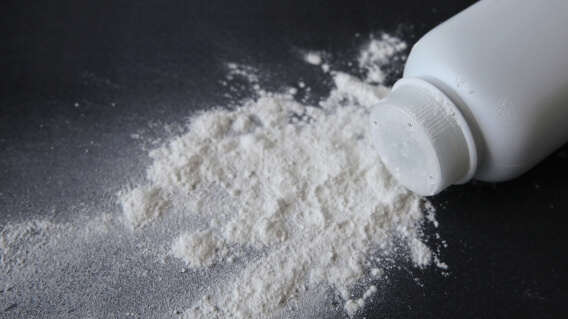Johnson & Johnson Sending Talc Cases to Bankruptcy Court
Legislation & LitigationWritten by Tim Povtak | Edited By Walter Pacheco

As expected, Johnson & Johnson has unloaded its burgeoning talc-related liabilities on a new subsidiary that filed for Chapter 11 bankruptcy protection on Oct. 14.
The controversial move, which confirmed the fears of many personal injury attorneys, is an attempt by J&J to more easily resolve the thousands of current and future lawsuits claiming that its talc products have caused serious medical problems, including ovarian and mesothelioma cancers.
Most of the claims contend that talc in the products was contaminated with toxic asbestos fibers.
The filing, in U.S. Bankruptcy Court in the Western District of North Carolina, puts an immediate halt to all legal proceedings in state and federal courts and eventually will move all unsettled talc lawsuits before a single bankruptcy judge.
LTL Management LLC is the newly created subsidiary that will inherit the cases, allowing J&J to separate its immense profitability from its potential liabilities, which will be considerably smaller under bankruptcy protection. Johnson & Johnson is expected to save billions of dollars long term.
Lower Settlements Predicted After J&J’s Action
A panel of lawyers representing talc claimants had tried unsuccessfully to block the corporate restructuring. A U.S. Bankruptcy Court in the District of Delaware refused to issue a restraining order against J&J in August.
The filing is expected to pressure claimants to accept lower settlements than they would have before, stop jury verdicts and avoid any excessive payouts.
“This is crazy. What’s happening here is a corporate crime, the likes of which we have never seen,” attorney Daniel Wasserberg, a New York City litigator who specializes in plaintiff talc cases, told The Mesothelioma Center at Asbestos.com. “I love the United States of America, but it is a sad day in this country when a megacorporation like Johnson & Johnson can take the liabilities for thousands of cancer and death cases, stick them in a brand new ‘spin-off’ in Texas, and then bankrupt it a few weeks later, simply because the litigation is a nuisance to their hundreds of billions in profits every year.”
Bankruptcy court will now determine the amount to be put into a trust fund so that LTL Management can potentially compensate present and future claimants. In the most recent court filing, J&J said it already had established a $2 billion trust.
There are more than 34,000 pending cases today involving Johnson & Johnson’s talc-based products, including Johnson’s Baby Powder. The first talc case filed against J&J was in 2014.
“We are taking these actions to bring certainty to all parties involved in the cosmetic talc cases,” Michael Ullmann, J&J executive vice president and general counsel said in a statement. “While we continue to stand firmly behind the safety of our cosmetic talc products, we believe resolving this matter as quickly and efficiently as possible is in the best interests of the company and all stakeholders.”
Until now, J&J had continued to litigate many cases in court and defend the safety of its products while citing numerous studies that have shown no evidence of contamination. Other studies have shown traces of asbestos contamination.
Despite defending its products, J&J announced in 2020 that it would stop selling its iconic talc-based baby powder in the U.S. and Canada, citing a decline in customer demand based on safety concerns.

Get help finding a top attorney who can get you the compensation you deserve.
Get Help NowBankruptcy Will Likely Reduce Talc Settlements
While J&J has won many court cases, it also has lost several high-profile ones. In August, a California state superior court awarded $26.5 million to a woman who said her mesothelioma cancer was caused by a lifetime use of Johnson’s Baby Powder.
In June, the U.S. Supreme Court rejected a request by J&J to consider overturning an earlier, $2.1 billion judgement in Missouri involving 22 women with ovarian cancer.
According to court papers, settlements and verdicts through the last five years for J&J have reached $3.5 billion. Defense costs have been estimated at $1 billion.
J&J is far from the first company to use this reorganization strategy, which involves a business-friendly law that allows assets to be separated from corporate liabilities.
Lumber giant Georgia-Pacific used its Bestwall subsidiary in 2017 to limits its asbestos liabilities. Trane Technologies and Saint-Gobain are in the midst of similar bankruptcy restructuring efforts.
Johnson & Johnson also is still facing scrutiny from a U.S. House of Representatives oversight committee, which demanded in August any information regarding the company’s future bankruptcy plans.
“This stinks,” attorney Andy Birchfield, an Alabama-based plaintiff who represents talc claimants, said in a statement. “They claim their product is safe and then attempt to hide behind bankruptcy. J&J can run, but it can’t hide.”






